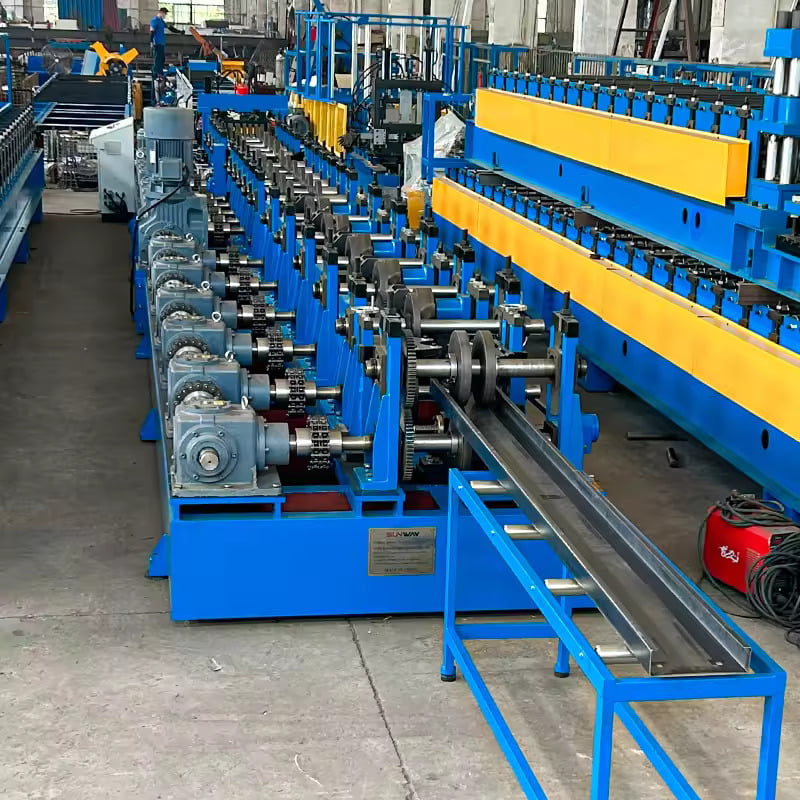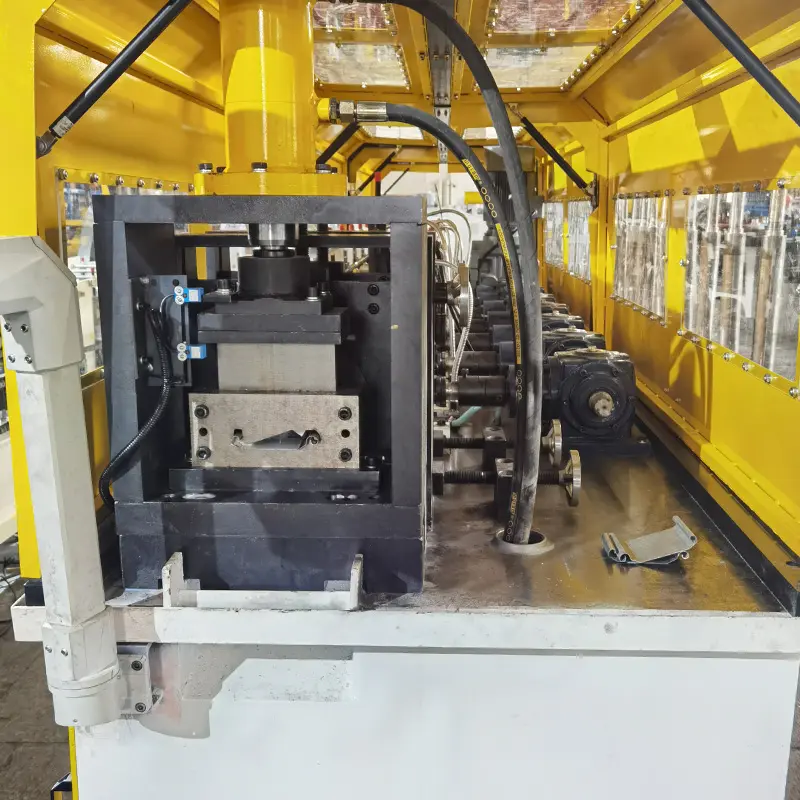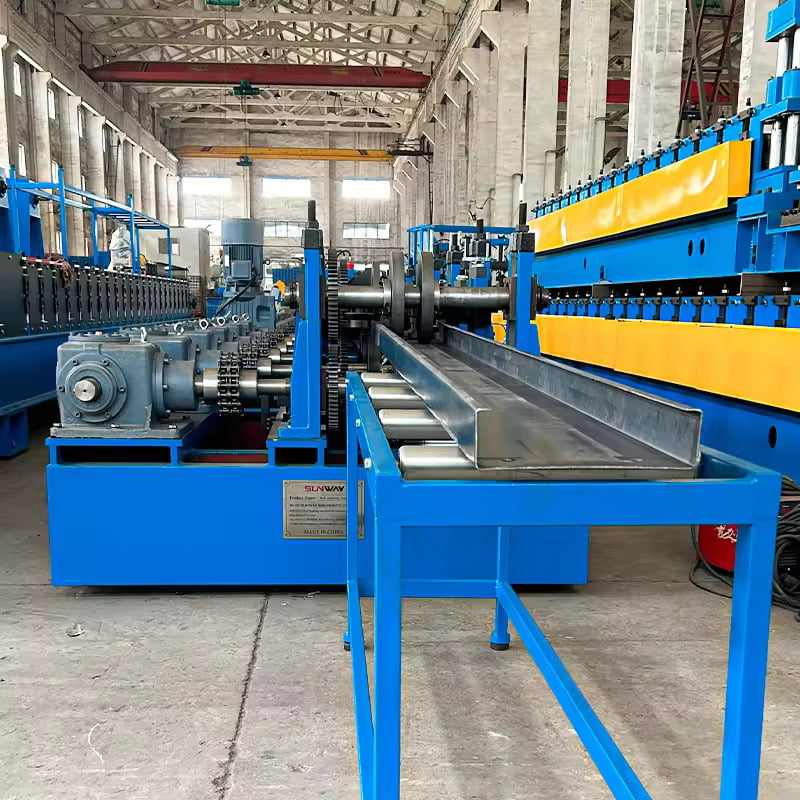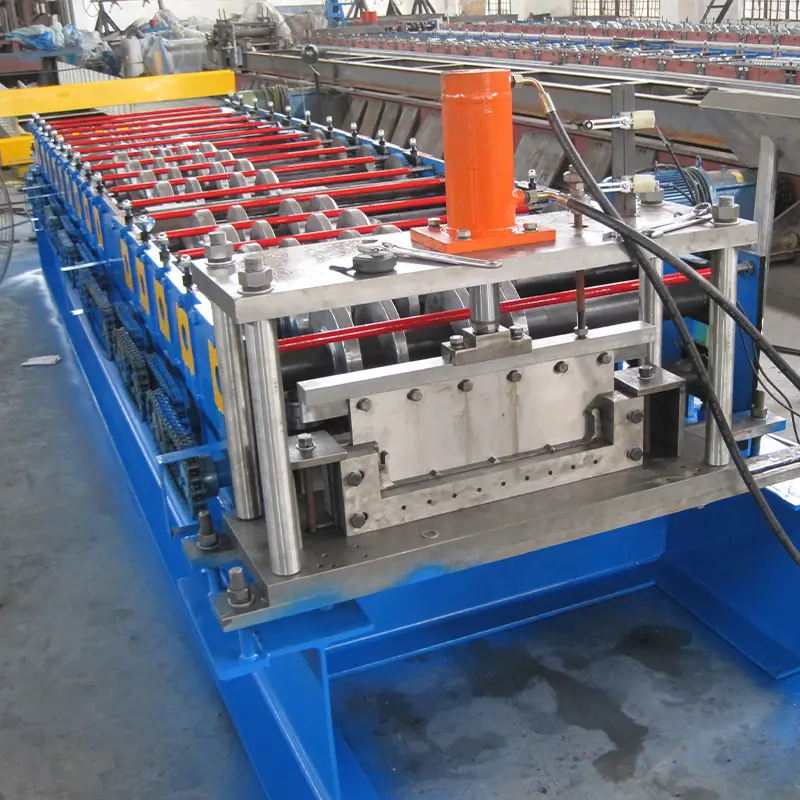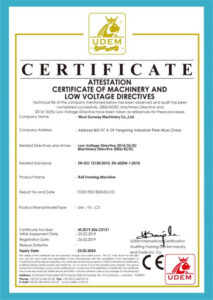UN machine de formage de rouleaux de tuyau de descente est un équipement important utilisé pour la fabrication de tuyaux de descente et de gouttières à partir de bobines de métal. Ce guide présente une vue d'ensemble des profileuses pour tuyaux de descente, notamment leur fonctionnement, les types, les applications, les spécifications, les facteurs de sélection, l'installation, le fonctionnement, l'entretien et bien plus encore.
Vue d'ensemble de la profileuse de tuyaux de descente
Une profileuse pour tuyaux de descente est conçue pour transformer des bobines de métal en profilés formés pour les systèmes d'évacuation des eaux de pluie dans les bâtiments.
Qu'est-ce qu'une descente de gouttière ?
Les tuyaux de descente, également appelés tuyaux de descente d'eau de pluie, sont des conduits verticaux utilisés pour collecter et diriger l'eau de pluie des gouttières de toit vers le sol ou le réseau d'eaux pluviales. Ils sont généralement fabriqués à partir de feuilles de métal formées.
Fonctionnement de la profileuse de tuyaux de descente
Une machine de profilage de tuyaux de descente prend une bobine de métal en entrée et la convertit en profils de tuyaux de descente formés en passant par des stations de formage consécutives. Chaque poste forme progressivement la feuille à l'aide de rouleaux jusqu'à l'obtention du profil final. Le tuyau de descente formé est ensuite coupé en longueurs selon les besoins.
Les profileuses pour tuyaux de descente permettent de passer rapidement d'un profil à l'autre grâce à des systèmes de changement rapide des matrices.
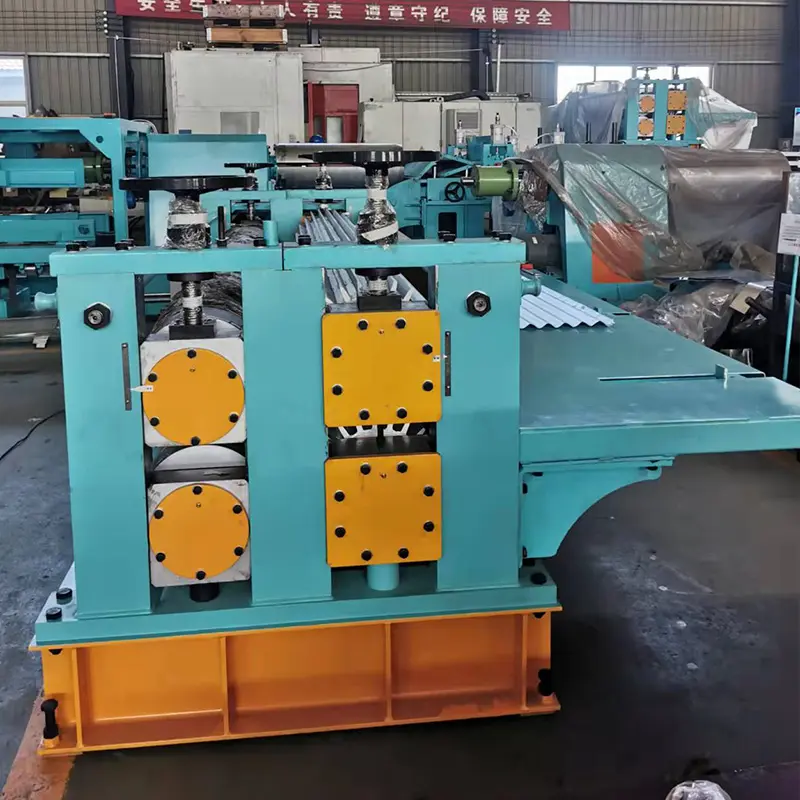
Types de Machines de formage de rouleaux de tuyaux de descente
Les profileuses pour tuyaux de descente sont disponibles en différentes configurations pour répondre aux différentes exigences de production :
Basé sur l'automatisation
- Manuel : Nécessite l'intervention d'un opérateur à chaque poste
- Semi-automatique : Alimentation automatique des feuilles mais changement manuel des profils
- Entièrement automatique : Alimentation, profilage, découpe et empilage automatiques
En fonction de la vitesse de production
- Faible vitesse : jusqu'à 10 m/min
- Vitesse moyenne : 10 - 40 m/min
- Vitesse élevée : Supérieure à 40 m/min
Des vitesses plus élevées augmentent la capacité de production.
Basé sur les stations de formation
- Station 10-12 pour profils simples
- 16-24 stations pour les tuyaux de descente complexes à double couche
- Un plus grand nombre de stations permet d'obtenir plus de formes de profil
Basé sur le système de contrôle
- Commande manuelle mécanique à l'aide de leviers
- Commande hydraulique automatique pour la synchronisation
- Servomoteur avec contrôle PLC/CNC pour la précision et la flexibilité
Applications des descentes de gouttières produites par laminage
Les descentes de gouttières produites à l'aide de machines de profilage sont utilisées dans :
- Systèmes de drainage pour les bâtiments résidentiels, commerciaux et industriels
- Grands entrepôts, usines, hangars d'aviation drainage
- Stades, auditoriums, halls d'exposition drainage de l'eau
- Drainage des toits en pente pour les appartements, les villas, etc.
- Drainage autour des barrages, des ponts, des sections souterraines
- Récupération des eaux de pluie et réorientation des eaux pluviales
- Structures temporaires telles que les abris et les chapiteaux
Les tuyaux de descente formés par laminage permettent une production plus rapide et plus économique que la fabrication sur site.
Spécifications de la profileuse pour tuyaux de descente d'eau pluviale
Les profileuses pour tuyaux de descente sont disponibles dans différentes spécifications en fonction des exigences de production :
| Spécifications | Gamme typique |
|---|---|
| Vitesse de formage | 10 - 80 m/min |
| Stations de formation | 10 – 24 |
| Épaisseur du métal | 0,3 - 1 mm |
| Largeur maximale de la bobine | 1000 - 1250 mm |
| Taille minimale du tuyau de descente | 50 x 50 mm |
| Taille maximale du tuyau de descente | 300 x 300 mm |
| Consommation électrique | 15 - 50 kW |
| Mode de coupe | Auto/Semi-auto/Manuel |
| Système de contrôle | Mécanique, hydraulique, servo, PLC |
| Taille de la machine | 10 - 25 m de long x 2 - 3 m de large |
| Poids de la machine | 6000 - 15000 kg |
Ces paramètres peuvent être personnalisés en fonction des besoins de production.
Normes de conception et de travail
Les profileuses pour tuyaux de descente doivent respecter certaines normes de conception :
- Utilisation de cadres en acier à haute résistance pour minimiser les vibrations à grande vitesse
- Conception de l'entraînement découplé pour permettre la variation de la vitesse entre les stations
- Rouleaux et guides trempés pour une usure réduite et un flux de feuilles régulier
- Dérouleurs motorisés multi-axes pour une alimentation régulière des feuilles
- Engrenages et réducteurs de précision pour un formage précis des profils
- Système de presse hydraulique pour une application uniforme de la pression
- Dispositifs de sécurité tels que les arrêts d'urgence, les barrières immatérielles
- Armoire électrique et commandes à l'épreuve de la poussière
L'outillage du cylindre et la séquence de pliage doivent être optimisés à l'aide d'une analyse FEA afin d'obtenir un flux de matériau uniforme sans fissures ni amincissement.
Choisir un Machine à former des rouleaux de tuyaux de descente Fabricant
Voici quelques conseils pour choisir un bon fabricant de profileuses pour tuyaux de descente :
| Paramètres | Ce qu'il faut rechercher |
|---|---|
| Vivre | Nombre d'années d'activité, longue histoire d'exploitation |
| Installation de production | Fabrication en interne avec contrôle de la qualité |
| Personnalisation | Possibilité d'adapter la machine aux besoins |
| Qualité | Automatisation avancée pour une qualité constante |
| Certification | Certifications ISO 9001 et CE |
| Service | Assistance à l'installation, formation des opérateurs |
| Coût | Des prix et des conditions de paiement compétitifs |
| Livraison | Un stock de modèles standard prêt à l'emploi |
| Localisation | Distance pour la logistique et les services |
- Contrôler la qualité des échantillons de profils provenant des machines
- Assurer la disponibilité de l'assistance technique après l'achat
- Comparer les prix et les délais de livraison
- Visiter l'usine si possible pour inspecter le processus de fabrication
- Choisir un fabricant réputé pour un équipement fiable
Cela permet d'obtenir des profileuses de haute performance adaptées aux besoins.
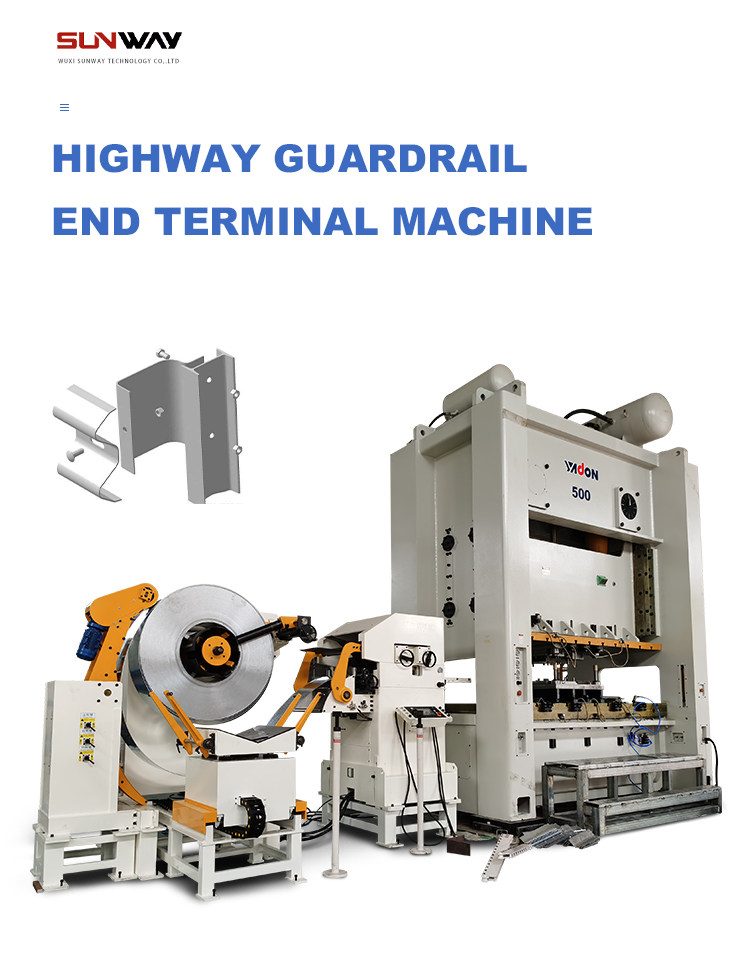
Installation d'une profileuse pour tuyaux de descente
Une installation correcte est essentielle au bon fonctionnement de la ligne de profilage des tuyaux de descente :
- Préparer les fondations en béton et positionner la machine à l'aide d'un équipement de levage
- Niveler le bâti de la machine à l'aide de cales et de coulis si nécessaire.
- Assembler les sections de profilage selon le dessin
- Installer le dérouleur, le redresseur, les stations de jonction à l'aide des alignements
- Connecter les arbres d'entraînement de la boîte de vitesses entre les stations
- Câbler les interrupteurs électriques, les commandes et les contrôles
- Installer les protections autour des engrenages, des rouleaux et des autres pièces mobiles.
- Circulation de l'huile de graissage et fonctionnement du système hydraulique, le cas échéant
- Mettre la machine à la terre de manière appropriée par le biais de fosses de mise à la terre
- Effectuer des essais sur la machine et procéder aux ajustements nécessaires
Une installation correcte, conforme au manuel du fabricant, est importante pour la sécurité et les performances.
Fonctionnement et opération de la machine à former des rouleaux de tuyaux de descente
Le fonctionnement d'une machine à former les rouleaux de descente de gouttière comprend les étapes suivantes :
Contrôles et réglages préalables à l'utilisation
- Vérifier le câblage électrique, le système hydraulique, la lubrification
- Régler le dérouleur de manière à ce que la tension du poids de la bobine soit suffisante.
- Réglage de la presse à cisaillement en fonction de l'épaisseur du matériau
- Régler les rouleaux de chaque station pour assurer un flux de feuilles adéquat.
- Régler les butées en fonction de la longueur de coupe du tuyau de descente nécessaire
- Régler correctement les guides afin d'éviter toute distorsion pendant le fonctionnement
- Éliminer tout débris de matériau ou résidu d'huile sur la piste de roulement.
Démarrage de la machine
- Démarrez la machine en mode jogging et observez chaque station
- Mettre en marche le dérouleur de bobines et faire passer la feuille par les stations.
- Augmenter progressivement la vitesse à partir du panneau pour atteindre la vitesse de travail.
- Ajuster la tension du dérouleur et le réglage de la presse à cisaillement selon les besoins
- Déclencher la coupure automatique et l'empilage si l'installation en est équipée
- Exécuter la production après s'être assuré de la bonne formation du profilé
Pendant le fonctionnement
- Contrôler l'usure du contour des rouleaux et l'ajuster périodiquement
- Écouter tout bruit anormal dans les stations, s'arrêter et inspecter
- Veiller à la bonne lubrification de toutes les pièces mobiles
- Contrôler périodiquement les dimensions du profil à l'aide de jauges
- Arrêter la ligne avant le changement de bobine et enlever la feuille résiduelle
- Nettoyer les déversements d'huile ou les déchets métalliques autour de la machine
Fermeture
- Réduire progressivement la vitesse jusqu'à zéro pour éliminer tous les matériaux.
- Couper l'alimentation des postes de déroulage, de redressement et de cisaillement.
- Couper l'alimentation principale et verrouiller l'électricité
- Nettoyer soigneusement la zone et la machine avant la prochaine utilisation
Le respect des procédures opérationnelles standard est important pour la qualité et la sécurité.
Entretien des Machines de formage de rouleaux de tuyaux de descente
Des activités d'entretien régulières garantissent le bon fonctionnement des profileuses de tuyaux de descente :
| Activité | Fréquence | Méthode |
|---|---|---|
| Nettoyage | Quotidiennement | Éliminer la ferraille, les déversements d'huile et la poussière de la zone de la machine. |
| L'inspection | Quotidiennement | Vérifier l'absence de bruits anormaux, d'échauffement, de fuites |
| Lubrification | Hebdomadaire | Graisser les roulements, les engrenages et la chaîne. |
| Inspection des rouleaux | Mensuel | Vérifier le contour, remplacer les rouleaux usés |
| Inspection de la conduite | Mensuel | Vérifier la tension de la chaîne et de la courroie, la régler ou la remplacer si nécessaire. |
| Électricité | Trimestrielle | Vérifier les connexions desserrées, les isolations, réparer si nécessaire |
| Hydraulique | Trimestrielle | Vérifier l'étanchéité des cylindres, des pompes et des tuyaux |
| Boîte de vitesses | Annuel | Vidange de l'huile de transmission selon le calendrier |
- Maintenir des programmes quotidiens, hebdomadaires et mensuels de nettoyage, d'inspection et de lubrification.
- Programmer la maintenance préventive pendant les arrêts de l'usine
- Garder en stock un nombre suffisant de pièces de rechange comme les joints, les roulements, les rouleaux.
- Former les techniciens aux activités de maintenance des équipements
- Tenir des registres de maintenance pour suivre les problèmes et les améliorations.
Un entretien adéquat améliore la durée de vie de la machine et évite les pannes imprévues.
Dépannage des profileuses de tuyaux de descente de gouttières
Les problèmes les plus courants rencontrés dans les machines de profilage de tuyaux de descente sont les suivants :
| Enjeu | Causes possibles | Solutions |
|---|---|---|
| Bourrage de feuilles | Les rouleaux présentent une usure et des lacunes Mauvaise tension du dérouleur Guides mal alignés | Remplacer les rouleaux usés Régler la tension du dérouleur Réaligner les guides |
| Distorsion du profil | Écarts entre les rouleaux inégaux L'avance du matériau n'est pas droite Niveaux de station inégaux | Régler uniformément l'écartement des rouleaux Régler l'alignement de l'alimentation en matériau Stations de formage à niveau |
| Bruit excessif | Attaches lâches Usure des roulements Pignon de chaîne usé | Serrer les écrous et les boulons desserrés Remplacer les roulements usés Remplacer les pignons usés |
| Fuite d'huile hydraulique | Endommagement du tuyau Joint usé | Remplacer les tuyaux endommagés Remplacer les joints usés |
| Vibrations de la machine | Station mal alignée Boulons de fondation desserrés | Réalignement des stations Serrer les boulons de fondation |
L'analyse des causes profondes et la correction des défauts permettent de résoudre les problèmes courants liés aux machines de profilage.
Amélioration de la productivité des profileuses de tuyaux de descente
Voici quelques moyens d'améliorer la productivité des profileuses pour tuyaux de descente :
- Optimiser la vitesse de la ligne en réduisant les goulets d'étranglement
- Programmer des changements rapides de matrices pour maximiser les cycles de production
- Automatiser les processus en aval tels que la coupe et l'empilage
- Assurer une qualité constante des matières premières utilisées
- Former les opérateurs aux procédures opérationnelles standard
- Suivre l'efficacité globale de l'équipement et cibler les améliorations
- Réduire les temps d'arrêt non planifiés grâce à la maintenance préventive
- Conserver un stock suffisant de pièces d'usure telles que les rouleaux.
- Mise à niveau de la machine avec des fonctionnalités telles que la servocommande, les données IoT au fil du temps.
En prenant les bonnes initiatives, il est possible de réaliser des gains de productivité substantiels sur les lignes de profilage de tuyaux de descente.
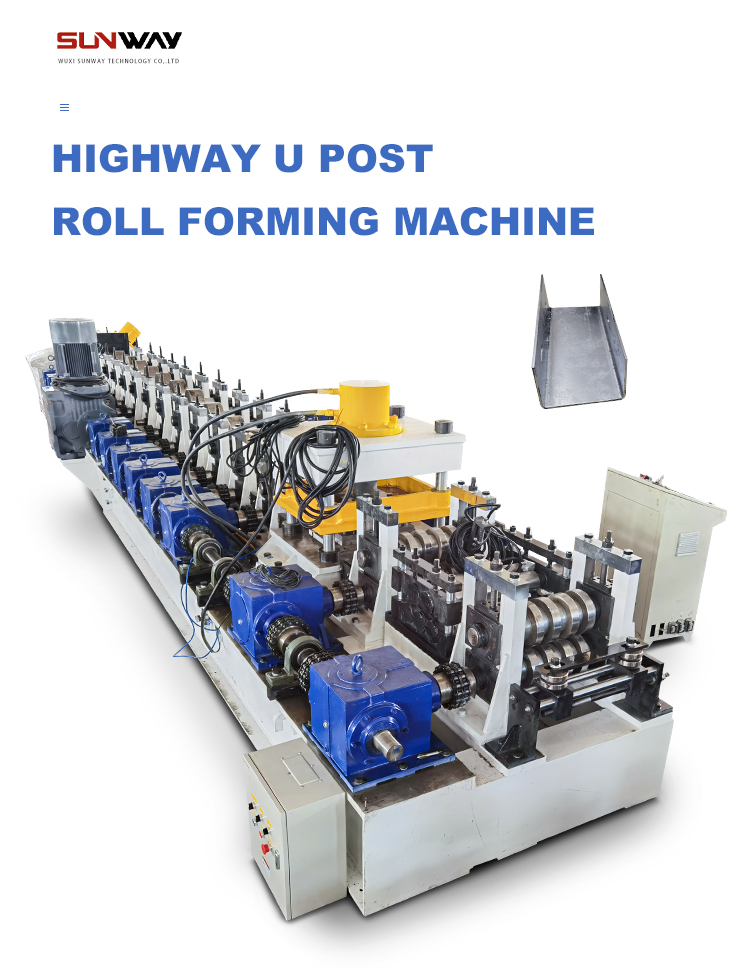
FAQ
Q : Quelle est la capacité de production typique des profileuses pour tuyaux de descente ?
R : La capacité de production dépend de la vitesse de la machine et des profils - généralement 30-50 mètres/min, ce qui donne un rendement d'environ 500-800 mètres/heure.
Q : Quelle épaisseur de bobine peut-on utiliser ?
R : Les machines peuvent généralement traiter des bobines de 0,3 mm à 1 mm d'épaisseur. Les bobines plus épaisses peuvent nécessiter une préparation des bords.
Q : Quelle est la précision typique obtenue ?
R : Les machines de pointe à servocommande peuvent atteindre une précision dimensionnelle de ±0,5 mm et une précision angulaire de ±1°.
Q : Quelle est la consommation électrique de ces machines ?
R : La consommation électrique dépend de la taille de l'appareil et varie entre 15 kW pour une petite machine à 10 postes et 50 kW pour une grande machine à 24 postes.
Q : Quelles sont les activités de maintenance régulières requises ?
R : L'entretien comprend le nettoyage, la lubrification et l'inspection des rouleaux, des entraînements, des systèmes hydrauliques et électriques, conformément au calendrier.
Q : Quelle est la durée de vie typique de ces machines ?
R : Avec un entretien adéquat et le remplacement des composants si nécessaire, la durée de vie peut être de 15 à 20 ans.
Q : Quels sont les facteurs qui influencent le coût de la machine ?
R : La vitesse, le nombre de stations, le niveau d'automatisation et les accessoires en option ont une incidence sur le coût total.
Q : Quelle est la surface nécessaire pour installer la machine ?
R : La longueur est déterminée par le nombre de stations. La zone de dégagement typique est d'environ 30 m x 4 m pour une ligne de taille moyenne.
Q : Quels sont les consommables nécessaires pendant l'opération ?
R : Les bobines de métal, les lubrifiants, l'huile hydraulique, les pièces détachées telles que les rouleaux, les chaînes et les courroies sont des consommables.
Conclusion
La profileuse pour tuyaux de descente est un équipement efficace qui permet de produire à grande vitesse des tuyaux de descente d'eau de pluie de différentes tailles et formes. Grâce à ce guide, les fabricants peuvent comprendre tous les aspects clés de la sélection, de l'installation, du fonctionnement et de l'entretien des profileuses pour tuyaux de descente afin de maximiser la productivité et la qualité des produits.

